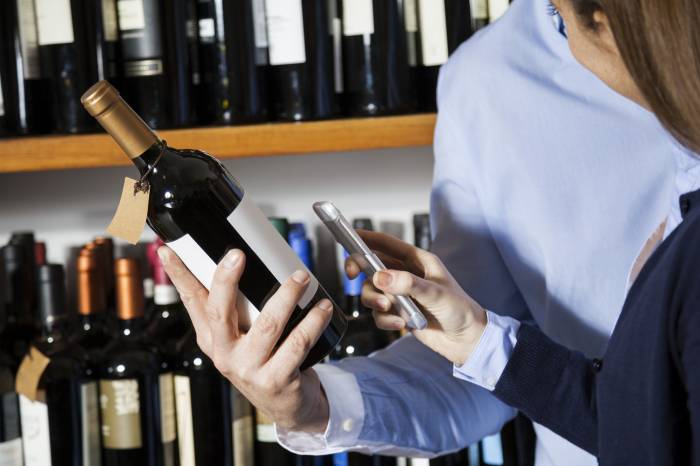AI and Digital Tools Reshape Alcohol Retail as Industry Adapts to New Consumer Expectations
Supermarkets and small retailers embrace technology to personalize shopping, streamline operations, and remain competitive in a rapidly evolving market
2025-09-05

Alcoholic drinks retailing is undergoing a significant transformation as digital technology and artificial intelligence (AI) become central to how retailers source, market, and sell products. Across the United States and globally, both large supermarket chains and smaller retailers are adopting new tools to improve efficiency, personalize customer experiences, and stay competitive in a rapidly changing market.
Retailers are now using AI not only to track shipments and manage inventory but also to decide which products appear on shelves. This shift is visible from the back end of logistics to the front lines of customer engagement. Supermarkets are experimenting with digital price tags, interactive shelf displays, and QR codes that replace traditional barcodes. These technologies allow shoppers to access detailed product information instantly, such as tasting notes or food pairing suggestions, directly from their smartphones.
Patrick Young, managing director at PRS In Vivo’s UK office, points out that retail media has become the leading channel for marketing spend, surpassing traditional digital advertising and television. Retailers are investing in digital screens on fridge doors and glass displays that can respond to individual shoppers or display personalized offers. While some experts question whether customers will take the time to scan bottles in-store, there is no doubt that these innovations are changing how people browse and select drinks.
Self-service checkouts, smart shopping carts, robotic assistants, and mobile apps offering personalized deals have become common in grocery stores. Many of these features rely on AI algorithms that analyze shopping patterns and suggest relevant products or promotions. According to the “State of AI in Grocery 2024” report by Grocery Doppio, AI is expected to unlock $136 billion in value for the grocery sector by 2030. The largest gains are projected in supply chain management ($67.7 billion) and merchandising ($25.7 billion), but marketing, store operations, customer service, and IT will also benefit.
The report found that 86% of grocery executives believe AI will be essential for future success, up from 81% last year. However, most retailers have yet to fully integrate AI across all areas of their business. The research urges companies to accelerate their adoption of AI-powered solutions to improve targeted marketing and customer service—key factors in building loyalty and satisfaction.
Some retailers have been early adopters of digital technology in drinks aisles. Waitrose in the UK began testing video shelf-edge displays eight years ago to provide customers with up-to-date wine information and recommendations from its buying team. The technology was initially used for seasonal campaigns but quickly evolved as a tool for gathering shopper insights.
Online shopping platforms have also embraced AI-driven personalization tools. Constructor’s AI shopping assistant is designed to mimic the experience of interacting with a knowledgeable store associate online. It uses real-time data analysis to recommend products based on individual preferences and answer questions during the buying process. This approach aims to make online shopping more engaging and help customers discover new drinks they might enjoy.
Sam Curtis, head of digital analytics at Kantar UK, highlights the growing importance of influencing not just consumers but also the AI systems that recommend products online. As AI-generated overviews now account for up to 70% of spirits searches, drinks brands must ensure their products are accurately represented and promoted by these systems or risk losing visibility.
AI is also being used to anticipate flavor trends and personalize promotions based on customer behavior. Diageo’s “What’s Your Whisky?” platform at its Johnnie Walker Princes Street visitor center in Edinburgh uses a proprietary sensory database to match visitors’ flavor preferences with specific whiskies. The company has expanded this technology into other categories like cocktails and beer, aiming for deeper consumer insights and more tailored brand experiences.
Loyalty programs are another area where AI is making an impact. Tesco stores have used AI-powered challenges that reward customers with extra loyalty points for completing personalized tasks during special campaigns. The retailer also uses Roambee’s supply chain visibility platform to track shipments in real time across thousands of locations, improving stock accuracy and reducing delivery errors.
Despite these advances, there are challenges ahead—especially for independent bottle shops and small retailers who may lack the resources to invest in predictive analytics or automation tools. As larger chains adopt sophisticated technologies, smaller businesses risk falling behind if they continue relying on manual processes.
The shift toward digital transformation is clear: 81% of sales in early 2024 were influenced by digital channels according to Grocery Doppio’s research. For alcoholic drinks retailers, understanding this shift is crucial for adapting strategies and maintaining competitiveness as technology continues to reshape the industry.
Founded in 2007, Vinetur® is a registered trademark of VGSC S.L. with a long history in the wine industry.
VGSC, S.L. with VAT number B70255591 is a spanish company legally registered in the Commercial Register of the city of Santiago de Compostela, with registration number: Bulletin 181, Reference 356049 in Volume 13, Page 107, Section 6, Sheet 45028, Entry 2.
Email: [email protected]
Headquarters and offices located in Vilagarcia de Arousa, Spain.